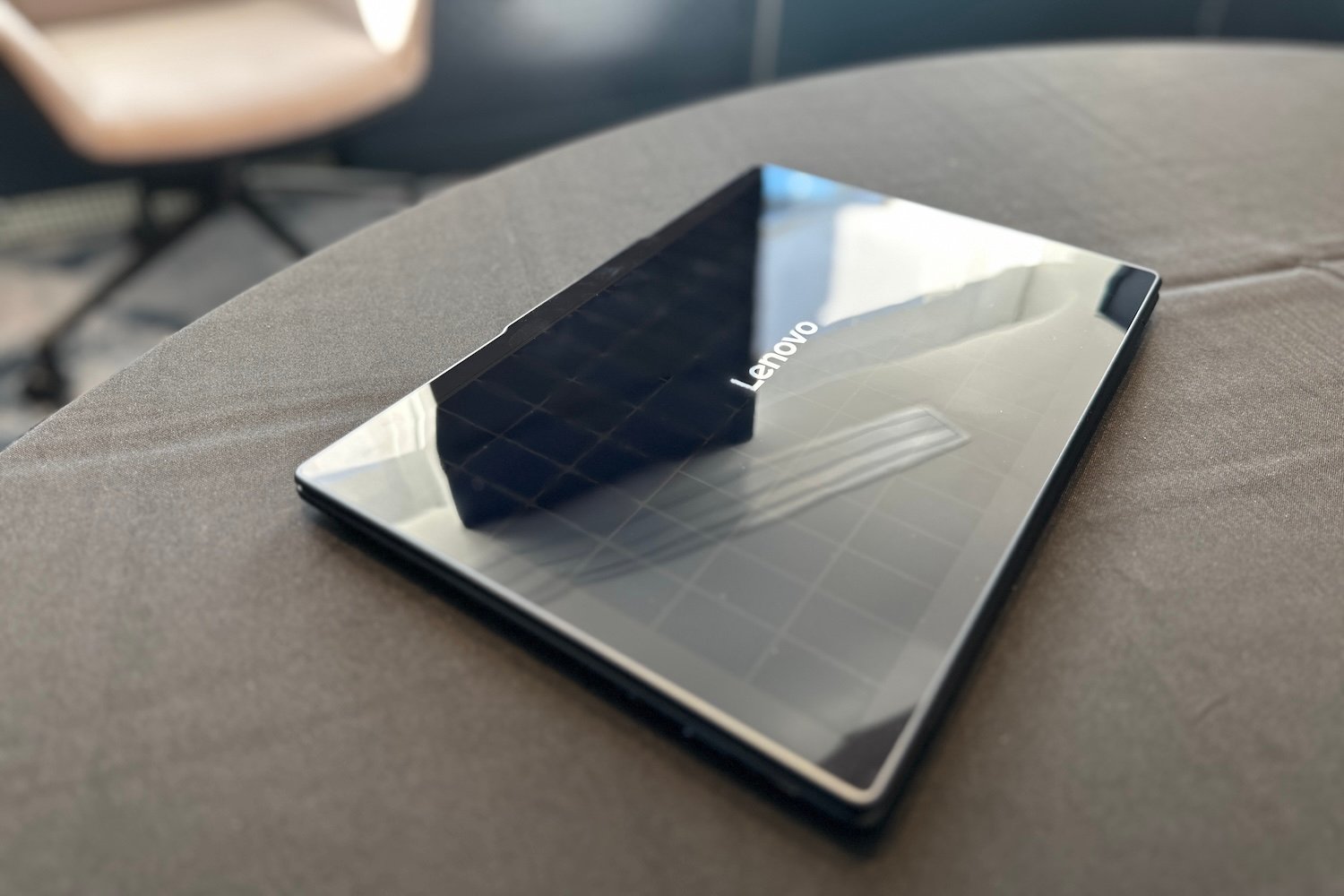
Lenovo Unveils Ambitious Concept Laptops at MWC 2025
Mobile World Congress (MWC) 2025 showcased a flurry of innovative technologies, but Lenovo stood out with its bold concept laptops, pushing the boundaries of design and functionality. While many manufacturers strive for incremental improvements, Lenovo embraces a "wacky world of concept products," hinting at a future where laptops are far more versatile and adaptable than today’s models.
Among the most intriguing concepts was the Yoga Solar PC. This laptop features a solar panel integrated into its lid, aiming to harness solar energy to extend battery life. The idea of incorporating solar power into laptops isn’t new, but Lenovo’s implementation is particularly noteworthy. The company claims a 24% solar conversion rate, surpassing the typical 15-22% rate found in most consumer solar panels. This impressive feat is achieved by strategically positioning the gridlines behind the solar cells, maximizing the surface area for energy absorption.
The Yoga Solar PC doesn’t need direct sunlight to generate power. The laptop can measure the current voltage, which gets translated and prioritized for specific system settings. Lenovo’s software demonstrated a power accumulation of around 7V when facing away from the sunlight and 12V when facing toward it. It could get more when getting direct sunlight. This could be a game changer for users who frequently work outdoors or in areas with limited access to power outlets.
Lenovo estimates that 20 minutes of direct sunlight can provide about one hour of video playback battery life. While this may not completely eliminate the need for traditional charging, it could significantly extend usage time, especially for tasks requiring less power. The Yoga Solar PC is powered by an Intel Lunar Lake chip, known for its power efficiency, further enhancing its energy-saving capabilities.
The Yoga Solar PC weighs just over 2.6 pounds, which is relatively light for a modern laptop. The solar panel adds a bit of weight, but the overall design remains portable and convenient. It could be a valuable tool for construction workers, travelers, or anyone who wants to work outdoors.
Another standout concept was the ThinkBook "codenamed Flip," a unique take on flexible displays. This laptop features an 18.1-inch, vertically-oriented OLED screen that folds up from the lid, creating a dual-screen setup. The design allows users on both sides of the laptop to view the display, making it ideal for collaborative work or presentations. The PC supports Workspace Split Screen to show a different image on the rear versus the front.
The ThinkBook Flip isn’t without its challenges. The folded portion of the screen is exposed, making it vulnerable to dust and accidental damage. Lenovo needs to develop a robust solution to protect the screen when the laptop is closed.
For users who crave even more screen real estate, Lenovo presented the ThinkBook 16p Gen 6 with Magic Bay extenders. These dual screens attach to the laptop’s Thunderbolt ports, adding two additional displays. The Magic Bay design utilizes pins to avoid consuming valuable ports. The additional screens can be handy for productivity tasks, such as keeping chat applications or reference materials visible while working on the main display.
The Magic Bay extenders aren’t perfect. The added weight can cause the laptop lid to tilt backward, requiring a kickstand for stability. Lenovo needs to refine the design to address this balance issue.
Lenovo also explored the realm of 3D displays with a curved monitor and laptop concept. Similar to Samsung’s 3D technology, this system uses eye tracking to create a faux-3D image on the screen. The 3D effect is most pronounced when the user is sitting directly in front of the display. The curved design enhances the sense of immersion, making it ideal for gaming or watching movies.
The 3D display can be switched to 2D mode with a single button, providing flexibility for different viewing preferences. While the 3D effect is visually impressive, it’s not for everyone. Some users may experience discomfort or eye strain when viewing 3D images for extended periods.
Amidst the flurry of concept devices, Lenovo also unveiled several new laptops that are closer to market-ready. The ThinkBook 16p Gen 6 can be configured with up to an Intel Core Ultra 9 275HX processor, an Nvidia RTX 5070 graphics card, and 64GB of RAM, making it a powerhouse for demanding tasks.
The Yoga line receives Intel Aura Edition versions, including the Yoga Pro 9i with a new Intel Core Ultra processor and up to an Nvidia RTX 5070 discrete GPU. The Yoga Pro 7i Aura Edition features a 3K OLED display and can be equipped with up to an Intel Core Ultra 9 CPU.
ThinkPad enthusiasts will be pleased to know that Lenovo is introducing the first 2-in-1 convertible for the line of business laptops in the form of the ThinkPad T14. The 14-inch line includes an AMD Ryzen Pro AI 300 CPU or an Intel Core Ultra 7 H, U, or V line (with different RAM options depending on CPU. The Ultra H and U and Ryzen Pro can also get a 2.8K OLED display.
Lenovo is also bringing back the TrackPoint, a beloved feature of the ThinkPad line. The ThinkPad X13 Gen 6 will feature the iconic red "nipple" TrackPoint in the center of the keyboard, addressing the concerns of ThinkPad fans who were disappointed by its absence in the X9.
Lenovo’s concept laptops at MWC 2025 demonstrate the company’s willingness to experiment and push the boundaries of laptop design. While not all of these concepts may become reality, they offer a glimpse into the future of computing, where laptops are more adaptable, energy-efficient, and user-friendly. Even in a world of wild concepts, sometimes it’s the little touches that matter.
